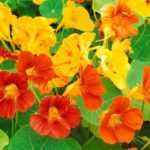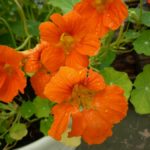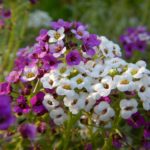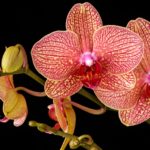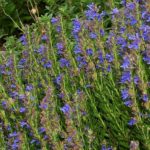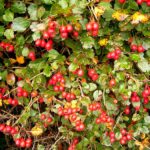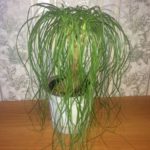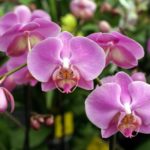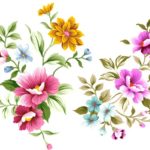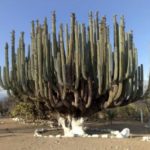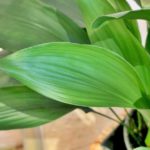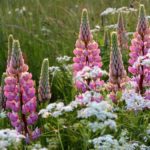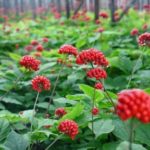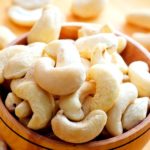Nasturtium
 Nasturtium is an annual medicinal herb from the Nasturtian family. The name comes from the Latin “trophae” – a small trophy given to the plant for the similarity of colors with a golden helmet, which in ancient times was considered the best trophy received from the enemy.
Nasturtium is an annual medicinal herb from the Nasturtian family. The name comes from the Latin “trophae” – a small trophy given to the plant for the similarity of colors with a golden helmet, which in ancient times was considered the best trophy received from the enemy.
Nasturtium is one of the most popular and beloved plants among gardeners in different countries. You can meet this lovely bright delicate flower in almost every garden. Most successfully grow nasturtium on the balcony.
History
Perhaps there is no such person who, after watching the famous film “The Man from the Capuchin Boulevard”, did not think, but what is the Capuchin? It turns out this word has several completely different concepts. Well, first of all, “Capuchin Boulevard” or, more correctly, “Capuchin Boulevard” is one of the Big Boulevards of Paris, so called by the name of the monastery that was once located on this street, where the nuns from the Order of the Capuchins lived. This boulevard was best known after the opening of the first cinema on it in 1895, which became the most active film propagandist, one of whose emissaries was the hero of Andrei Mironov. By the way, the members of the Order of the Capuchins got their name because the indispensable attribute of the monks’ attire was the spiky hoods, which in Italy are called capuchins. So now they call a fancy dress consisting of a cloak with a pointed hood. Another meaning of the word is the name of the chain-tailed monkeys of South America.
Well, the most famous meaning of the word “capuchin” is the name of the flower, which in Latin is called Tropaeolum. The second Latin name for this flower was given by the creator of the classification system Swedish physiologist Carl Linney. He noticed the similarity of the leaves of this plant with the shields of the ancient Roman warriors, and the flowers themselves seemed very similar to the bloody helmets of defeated enemies, which were hung on columns in Rome in honor of the victory. These columns were called tropaeolum. This name was not very popular and in most countries, including ours, this flower is called nasturtium.
Not only did nasturtium get such amazing names, it has a rather peculiar story, as a result of which botanists recognized it as a decorative look and began to decorate our gardens.
When in the XVI century, after the discovery of America by Columbus, the Spanish conquistadors went deep into this continent, they noticed that in the mountainous areas, in the territory of present-day Peru, Chile, Bolivia, Evadora, local Indians eat some plants tubers. One of which was a potato. It pleased the Europeans and soon this culture was brought to Europe, where over time it received universal recognition. But the aliens from the “Old World” did not like the second plant, whose tubers were eaten by local people. It was a tuberous nasturtium or, according to another, mashua. This plant is still cultivated in the Peruvian Andes and is used both as food and as animal feed. In those places you can find several varieties of wild nasturtium. The most famous are: curly nasturtium, Fintelmann nasturtium, short-umbrella nasturtium. But a plant similar to it, blooming in red and yellow flowers, has interested Europeans, not because of its edible qualities, but also because of the beauty of the flowers. Naturally, some of the Spaniards brought seeds of previously unseen plants to their homeland. Over time, the seeds of these plants spread throughout Europe.
A resident of Seville, Dr. Nicholas Monard was carried away by unknown plants brought from the New World. He purchased seeds from sailors and merchants returning from America and sowed them in his garden. And when, from unknown seeds, a plant grew to taste resembling a watercress popular at that time, he began to call it nasturtium by analogy, as many spicy plants with a pungent odor were called then. In his monograph published in 1571, Nicholas Monard gave this American plant the name “nasturtium.” And although subsequently specialists in plant taxonomy revealed that this American nasturtium and watercress are completely different plants, the name given to Nicholas Monard was fixed to him forever.
In general, plants of the Nasturtium family has several dozen species. These are mainly ornamental species, but these flower plants are edible. But the main advantage of them, of course, is in the amazing form of flowers and beautiful colors. In addition, nasturtium flowers have an amazing ability: at sunset, they seem to flash from the inside and glow themselves. This was first noticed by the daughter of Karl Linnaeus, which at first he did not believe until he saw himself.
